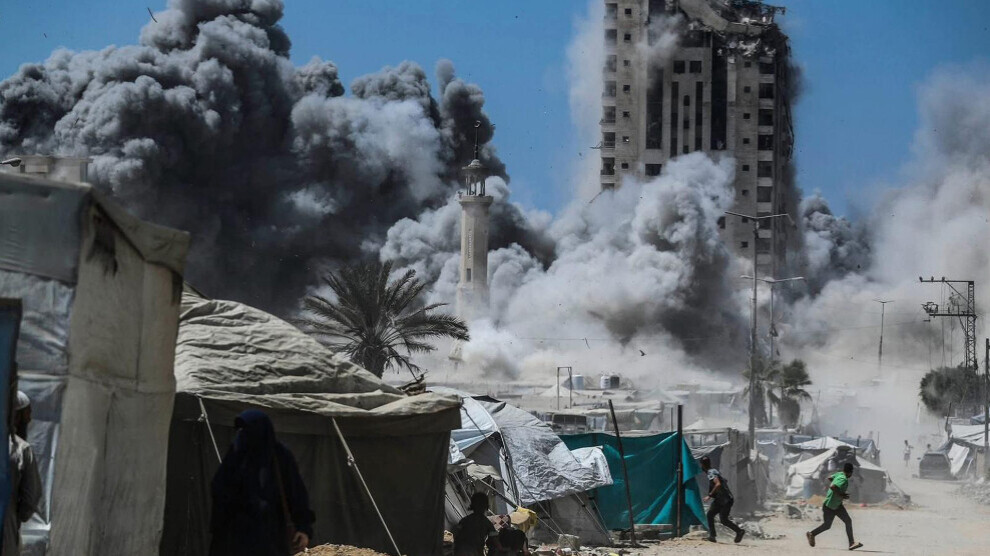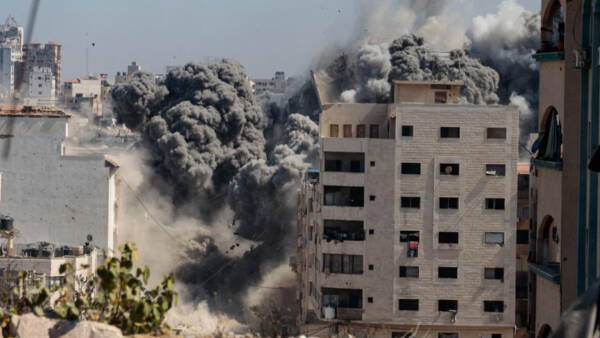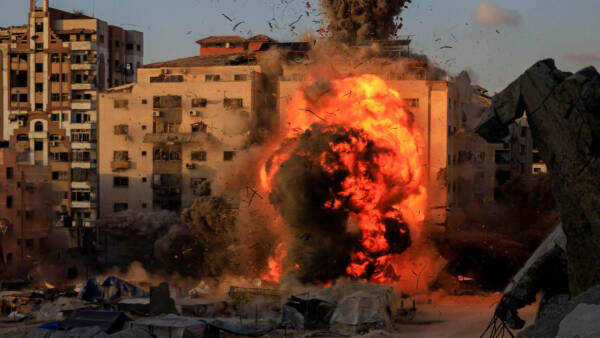Echoes of Trump’s Gaza Plan: Between Fragile Hope and Painful Rejection

Nagham Karaja
Gaza - September 29. Once again, former U.S. President Donald Trump has stepped back into the Middle East arena, unveiling a new peace initiative for Gaza. Marketed as his most ambitious plan since the much-debated “Deal of the Century” of 2020, the proposal arrives against a backdrop of relentless destruction: an ongoing war in Gaza, bloodshed without pause, collapsed infrastructure, and thousands of displaced families crammed into makeshift shelters or trapped on closed roads.
The plan, as outlined, promises several key points: an immediate ceasefire, the exchange of prisoners and hostages, a phased Israeli withdrawal, the dismantling of armed factions, the establishment of a transitional Palestinian “technical” administration under international oversight, the deployment of an international stabilization force, and a sweeping reconstruction program funded by donor states with mechanisms for monitoring and accountability.
Yet despite these lofty promises, the plan is mired in ambiguity. How will it be implemented? Who will guarantee it? And when? On the ground in Gaza, the question echoes in every destroyed street: Will Trump’s plan truly save lives, or will it merely reinforce external control over Palestinian decision-making?
A Battlefield Before Politics
Before analyzing political responses, one must first see the battlefield: families forced by Israeli orders to flee from north to south, the closure of Gaza’s vital coastal “al-Rashid Road,” airstrikes targeting fleeing convoys of women and children, hospitals and desalination plants bombed, shelters reduced to rubble, hunger and thirst spreading like a second siege.
In such a landscape, political language feels hollow compared to the cries of mothers, the wounded, and children. To give voice to the human side, three women activists from Gaza shared their perspectives.
“What matters is saving what’s left of Gaza’s people”
Activist Sylvia Hassan spoke with a heavy voice shaped by suffering:
“We don’t know if the aim is to save the Palestinian people or to save the occupation itself. What matters to us in Gaza is ending the war and stopping the extermination. We don’t care about the political maneuvers—our priority is the survival of those still alive.”
She added, “Perhaps we should say yes to the plan, but only with modifications, without falling into negotiations that bring more killing and destruction. Right now, al-Rashid Road is closed, people are being displaced, hospitals and refugees are bombed, the hungry and thirsty are being killed. In this scene, no political speech has meaning—Palestinian blood is worth more than all parties and factions.”

“The plan might be the only refuge”
For Sabrin al-Harazin, the plan must be seen through the exhaustion of daily life:
“The Palestinian people are drained—by bombing, destruction, displacement. If anyone supports this plan, it is only because they want to stop the bloodshed. It’s a double-edged sword: it might end the war, start reconstruction, and open a path toward statehood. But it might also drag us back a hundred years. Trump’s plan could be Gaza’s only refuge to halt Israel’s ongoing schemes against the Palestinian cause.”
“A deal shaped by Western interests”
Activist Nelly al-Masri summarized the dilemma starkly:
“Trump’s plan reflects Western and American interests in Gaza. Yes, we desperately need an end to the war and the river of blood. But we know the cost of an American plan will be painfully high. Accepting it is difficult, rejecting it may be even harder.”
Her short words carry the heavy truth: in Gaza, no option is free of unbearable cost.
Between Promise and Fear
On paper, Trump’s plan is presented as a complete package: an immediate ceasefire, the release of prisoners and hostages, a gradual Israeli withdrawal, dismantling of armed factions under international supervision, a transitional Palestinian administration led by “technical experts” monitored by a global peace council, the deployment of a stabilization force, and large-scale reconstruction programs for water, electricity, hospitals, and economic infrastructure. Donor states are expected to fund and oversee the process.
The plan even gestures toward a longer-term political track—rebuilding Palestinian institutions and potentially reviving the “two-state solution.” But without clarity on timelines, enforcement, or guarantees, the plan feels less like a roadmap and more like another vague promise, one that could just as easily restrict Palestinian rights under the cover of international management.

One Cry Above All: Stop the Killing
In Gaza’s destroyed streets, in emergency wards and crowded camps, one cry drowns out all others: “Stop the killing now.”
This is the core message from Gaza’s civilians—activists and ordinary people alike: no political plan, no international proposal, has meaning unless it begins with immediate action to halt the bombs, open humanitarian corridors, and prevent forced displacement or externally imposed governance.
Supporters of the plan see it as a fragile chance to stop the bloodshed and begin rebuilding. Opponents fear it will deepen foreign control and strip Palestinians of sovereignty. Both sides, however, are united in one desperate truth: Gaza cannot wait.
And so the question lingers, raw and unresolved: Will Trump’s plan rescue what remains of Gaza’s people, or simply write another tragic chapter into their history?
